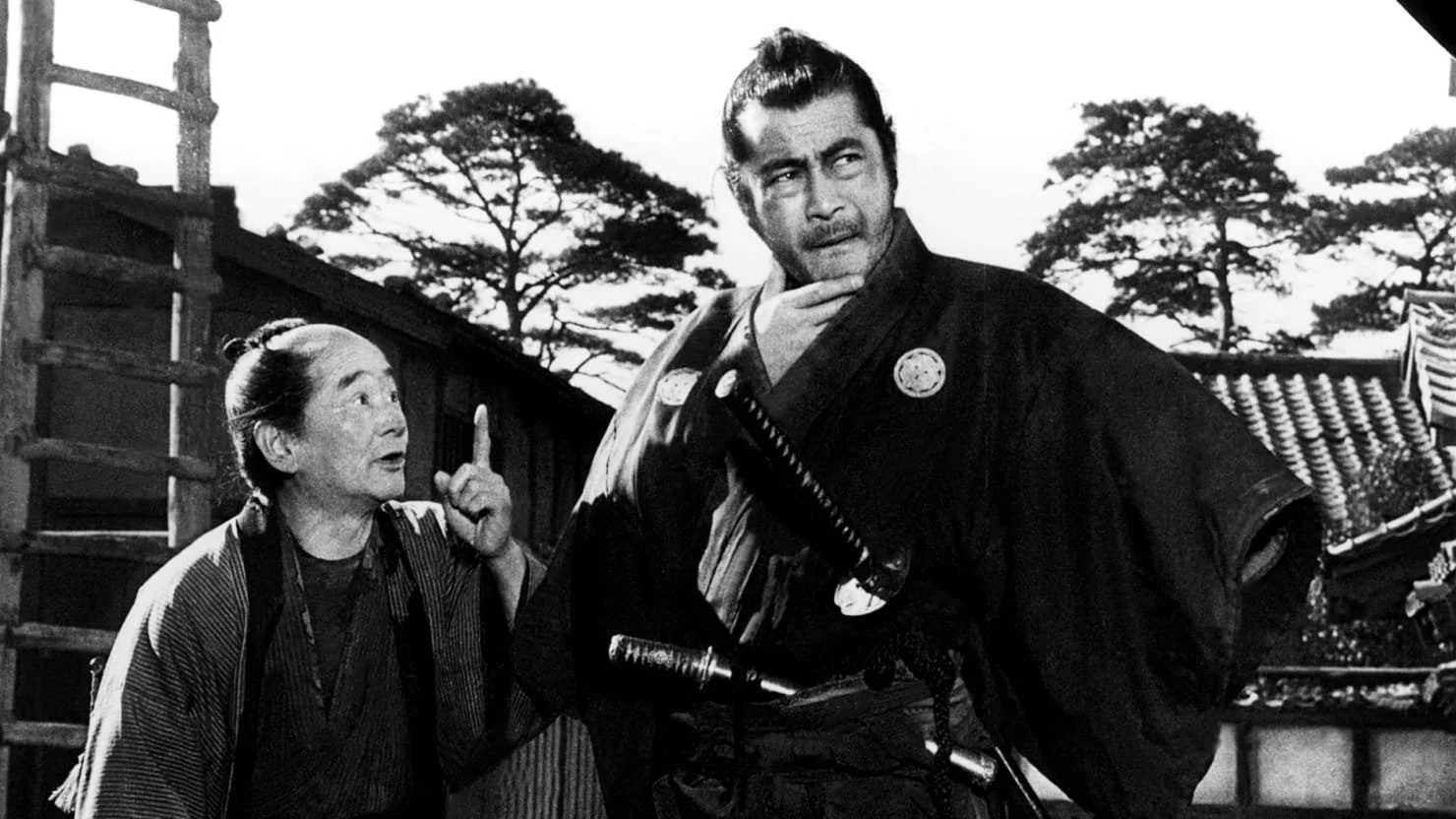Friday Night Flicks: Seven Samurai
Last week, I went to see Akira Kurosawa’s Seven Samurai at a repertory theater. They played it on film, but I think they had to keep switching between two different reels because the color would shift between sepia and a-little-less-sepia. It’s over three hours long, but it never seemed to drag. Even the pre-teen sitting in front of me stopped fidgeting when the final battle started. And when the movie ended, he told his dad he loved it.
I haven’t seen every Kurosawa film, but I have seen Seven Samurai twice in the last two months. I also recently saw Ikiru, a Kurosawa movie also starring Takashi Shimura, who plays the lead samurai in Seven Samurai. The two movies and performances couldn’t be more different. In Ikiru, Shimura plays a timid and tortured bureaucrat in a municipal department (mid-20th century) who receives a death sentence of stomach cancer. In Seven Samurai, he plays a strong, compassionate leader of a group of samurai (late-16th century) who defend a rural village from bandits in exchange for only room and board.
If that sounds like a good premise for an action-packed movie, you’d be right. But while there’s a lot of action, surely, and many swordfights, this time I was struck by how the movie depicts the relationships within the group of samurai and between the samurai and townspeople.
In a weird way, Seven Samurai is actually about eight samurai. The six fully-accredited samurai are accompanied by two others, one of whom is a samurai-in-training and another of whom is a drunken, slightly crazed man with lowly origins who desperately wants to be a samurai but never will be. This guy is played by Toshiro Mifune, who is definitely the most dashing and memorable of Kurosawa’s actors (one time I was watching Yojimbo at home and my mom said she had a crush on Mifune).
The apprentice samurai, played by Isao Kimura, brings an element of bildungsroman (coming-of-age) to the story. He is not yet allowed to embody the role of samurai, so he spends his time wandering around the town, lying in the grass, and having a secret love affair with one of the women in the village. We see him idealizing certain samurai in the group at different times as he finds his way to maturity.
Mifune’s character, who really just tags along with the others and is never formally recruited, ends up serving in the crucial role of mediator between the two social classes in the film: the noble-born samurai and the peasants. He is unpredictable, impulsive, crass, and childish at times, but his boundless sincerity and willingness to break the rules give him a freedom that the uptight samurai don’t have. He’s great with children, for example.
Speaking of freedom, the backdrop of 16th century Japan gives its own sense of great freedom – at least for the samurai. The peasants are, of course, barely scraping by and forced to toil for their food. But the samurai, as we encounter them in the early section of the movie, seem to be simply roaming around looking for gig work. They go from town to town taking various kinds of work as it comes. We even see one of the samurai chopping wood in some guy’s backyard. When they are offered a job that involves risking their lives to defend some peasants (usually they’d be working on behalf of a feudal lord or baron), all but one of them accept it. It makes you wonder whether they are desperate for work or just willing to sacrifice earning potential for a job that’s different, perhaps more virtuous, communal, or simply fun.
They do seem to have a lot of fun. Under the wise and good-spirited guidance of Shimura’s character, the group of samurai establish a rapport with one another and the villagers that is lighthearted, even when doing the serious work of preparing for battle. When the final battle comes, the stakes seem higher because of the bonds they have established amongst themselves. After all, there isn’t any money on the table; the stakes are immaterial. The real treasure was the friends they made along the way.—Will Powers




